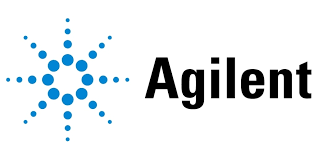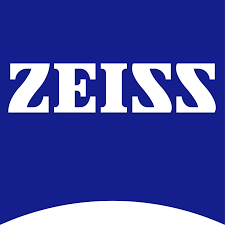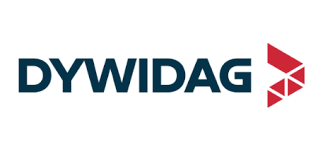Ai In Pathology Diagnostics
Published Date: 14 August 2025 | Report Code: ai-in-pathology-diagnostics
Ai In Pathology Diagnostics Market Size, Share, Industry Trends and Forecast to 2033
The report on Ai In Pathology Diagnostics offers a comprehensive analysis covering market dynamics, segmentation, technological advancements, and regional insights. It provides detailed data, forecasts, and trends for the period 2024 to 2033, equipping stakeholders with essential information to navigate advancements and growth prospects in the evolving landscape of pathology diagnostics powered by artificial intelligence.
| Metric | Value |
|---|---|
| Study Period | 2024 - 2033 |
| 2024 Market Size | $2.10 Billion |
| CAGR (2024-2033) | 7.8% |
| 2033 Market Size | $4.22 Billion |
| Top Companies | Philips Healthcare, GE Healthcare, Siemens Healthineers |
| Last Modified Date | 14 August 2025 |
Ai In Pathology Diagnostics (2024 - 2033)
Ai In Pathology Diagnostics Market Overview
Customize Ai In Pathology Diagnostics market research report
- ✔ Get in-depth analysis of Ai In Pathology Diagnostics market size, growth, and forecasts.
- ✔ Understand Ai In Pathology Diagnostics's regional dynamics and industry-specific trends.
- ✔ Identify potential applications, end-user demand, and growth segments in Ai In Pathology Diagnostics
What is the Market Size & CAGR of Ai In Pathology Diagnostics market in {Year}?
Ai In Pathology Diagnostics Industry Analysis
Ai In Pathology Diagnostics Market Segmentation and Scope
Tell us your focus area and get a customized research report.
Ai In Pathology Diagnostics Market Analysis Report by Region
Europe Ai In Pathology Diagnostics:
European markets are steadily advancing in AI adoption for pathology diagnostics, with values increasing from 0.54 Billion in 2024 to 1.09 Billion by 2033. Regulatory support and a focus on precision medicine drive regional growth.Asia Pacific Ai In Pathology Diagnostics:
In Asia Pacific, the market is expected to grow from 0.42 Billion in 2024 to 0.84 Billion by 2033. The region’s rapid technological adoption and increasing healthcare investments are key drivers, with emerging economies leading innovation in digital diagnostics.North America Ai In Pathology Diagnostics:
North America maintains a strong market presence with growth anticipated from 0.81 Billion in 2024 to 1.63 Billion by 2033. Advanced research facilities and early adoption of innovative technologies underpin this robust expansion.South America Ai In Pathology Diagnostics:
South America, particularly Latin America, is witnessing a gradual adoption of AI in pathology. The market is forecast to expand from 0.07 Billion in 2024 to 0.14 Billion by 2033, fueled by improving healthcare infrastructure and governmental incentives.Middle East & Africa Ai In Pathology Diagnostics:
The Middle East and Africa region is gradually emerging in the AI diagnostics sphere, with market sizes expected to grow from 0.25 Billion in 2024 to 0.51 Billion by 2033. Strategic investments and modernization of healthcare systems are significant contributors.Tell us your focus area and get a customized research report.
Ai In Pathology Diagnostics Market Analysis By Type
Global AI in Pathology Diagnostics Market, By Type Market Analysis (2024 - 2033)
The by-type segment encompasses key diagnostic approaches such as image analysis and clinical decision support. Image analysis remains the dominant segment, characterized by its extensive use in processing high-resolution digital slides and tissue images. Clinical decision support systems are gaining traction by complementing traditional diagnostics with predictive analytics and risk stratification. This segmentation highlights the differentiation in technological applications, providing insights into how specialized AI algorithms streamline diagnostic workflows and enhance precision. As the market evolves, continuous improvements and integrations between various diagnostic tools are expected to further refine these segments, ensuring improved interoperability and comprehensive patient care.
Ai In Pathology Diagnostics Market Analysis By Technology
Global AI in Pathology Diagnostics Market, By Technology Market Analysis (2024 - 2033)
The by-technology segment is driven primarily by the advancements in machine learning and natural language processing. Machine learning algorithms underpin the capacity to analyze complex imaging data, identify patterns, and enhance diagnostic accuracy, while natural language processing supports the interpretation of unstructured clinical data. The integration of these powerful technologies facilitates a dynamic framework that supports rapid diagnostic decision-making. This segment not only focuses on real-time analysis and automation but also emphasizes the importance of continuous software updates and algorithm training. As healthcare providers seek to improve diagnostic efficacy, the ongoing evolution in AI technologies promises enhanced performance and innovative solutions, thereby redefining the standard for pathology diagnostics.
Ai In Pathology Diagnostics Market Analysis By Application Area
Global AI in Pathology Diagnostics Market, By Application Area Market Analysis (2024 - 2033)
The application area segment of the market covers crucial domains such as cancer diagnostics, infectious disease diagnostics, and chronic disease management. Cancer diagnostics remains at the forefront, leveraging AI to improve early detection and treatment planning, while infectious disease diagnostics utilizes rapid screening and real-time monitoring tools. Chronic disease management incorporates AI for continuous patient monitoring and long-term care strategies. Each application area benefits from the enhanced analytical capabilities provided by AI, ensuring timely and accurate diagnoses. This segmentation underscores the adaptability of AI solutions to various clinical scenarios and highlights how tailored applications can drive improved healthcare outcomes while reducing diagnostic delays.
Ai In Pathology Diagnostics Market Analysis By End User
Global AI in Pathology Diagnostics Market, By End-User Market Analysis (2024 - 2033)
The end-user segment is comprised of hospitals, diagnostic laboratories, and research institutes that are key adopters of AI technologies. Hospitals are leading the adoption due to the need for rapid and accurate diagnostic tools to support clinical decision-making. Diagnostic laboratories are increasingly integrating automated systems to enhance workflow efficiency and precision in test results. Research institutes are pivotal in innovating and validating new AI-driven methodologies that contribute to the advancement of the overall market. This segmentation highlights the diverse requirements and contributions of each end-user group, emphasizing that tailored AI solutions can significantly optimize diagnostic processes and support improved patient outcomes across different healthcare settings.
Ai In Pathology Diagnostics Market Analysis By Product
Global AI in Pathology Diagnostics Market, By Product Market Analysis (2024 - 2033)
The by-product segment differentiates between software and hardware solutions that are integral to AI-enhanced pathology diagnostics. Software solutions, which include proprietary algorithms and analytical tools, dominate the market by offering scalability and frequent updates. In contrast, hardware components such as imaging devices and specialized processors are essential for handling large data volumes and ensuring high-resolution diagnostics. The synergy between these products supports a robust operational framework, enabling precise and streamlined diagnostic procedures. As technology continues to advance, the integration of state-of-the-art hardware with intelligent software is expected to drive further market innovation, ensuring that both segments contribute effectively to improved diagnostic outcomes.
Ai In Pathology Diagnostics Market Trends and Future Forecast
Tell us your focus area and get a customized research report.
Global Market Leaders and Top Companies in Ai In Pathology Diagnostics Industry
Philips Healthcare:
Philips Healthcare leverages innovative AI solutions to enhance diagnostic accuracy in pathology, integrating advanced imaging systems with predictive analytics to streamline workflows and improve patient care.GE Healthcare:
GE Healthcare is at the forefront of AI-driven diagnostic technology, focusing on developing robust digital pathology tools that accelerate diagnosis and help in the early detection of critical health conditions.Siemens Healthineers:
Siemens Healthineers employs cutting-edge AI algorithms to support precision diagnostics, integrating high-performance computing with clinical expertise to drive innovation in pathology and improve overall treatment outcomes.We're grateful to work with incredible clients.









FAQs
What is the market size of ai In Pathology Diagnostics?
The ai-in-pathology-diagnostics market is projected to reach $2.1 billion by 2033, growing at a CAGR of 7.8%. This expansion reflects increasing investments in AI technology for healthcare and diagnostic processes.
What are the key market players or companies in this ai In Pathology Diagnostics industry?
Key players in this sector include companies specializing in healthcare AI solutions, diagnostic equipment manufacturers, and software platforms dedicated to image analysis and clinical decision support related to pathology.
What are the primary factors driving the growth in the ai In Pathology Diagnostics industry?
Key growth drivers include rising demand for accurate and timely diagnostics, technological advancements in AI and machine learning, an increase in cancer prevalence, and a growing emphasis on personalized medicine.
Which region is the fastest Growing in the ai In Pathology Diagnostics?
North America is poised to be the fastest-growing region, expanding from $0.81 billion in 2024 to $1.63 billion by 2033, driven by advanced healthcare infrastructure and increasing adoption of AI technologies.
Does ConsaInsights provide customized market report data for the ai In Pathology Diagnostics industry?
Yes, ConsaInsights offers customized market reports tailored to specific needs, allowing clients to obtain insights aligned with their strategic objectives and market interests.
What deliverables can I expect from this ai In Pathology Diagnostics market research project?
Clients can expect comprehensive reports, actionable insights, projected market sizes, competitive analysis, and detailed segmentation data, including regional and sector-specific trends.
What are the market trends of ai In Pathology Diagnostics?
Current market trends involve an increased focus on AI-driven image analysis, development of clinical decision support systems, and integrative platforms utilizing machine learning for enhanced diagnostics.
